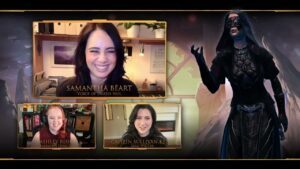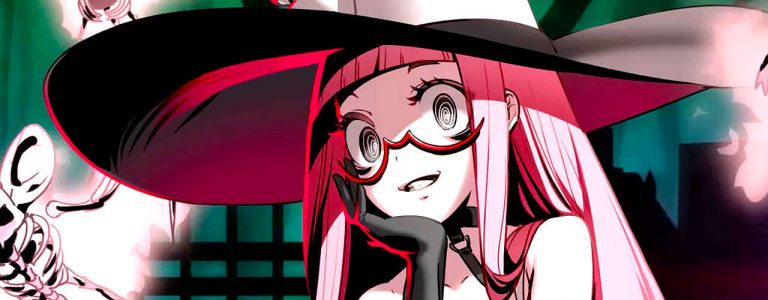Final Fantasy XIV: Shadowbringers was released in mid-2019 to an almost unanimous standing ovation from the community and critics alike. One of the strengths of this expansion is its reverence for the stories that have been told in installments past. However, it tells these tales not through the sweeping statements about morality and the nature of war that veteran players might be used to, but rather through a focus on well-known characters within the game as well as their relationships to the world around them and each other.
Natsuko Ishikawa, the lead main scenario writer for Shadowbringers, and Takeo Suzuki, art team lead, are some of the minds who were responsible for reframing established character narratives and refining familiar systems in order to carry out the above. The design philosophies adopted by their respective departments have been instrumental in allowing this expansion to have delivered what is arguably the game’s most engaging content to date. GameSpot spoke to both Suzuki and Ishikawa to gain some insight into their process.

The latest installment in Final Fantasy XIV’s already-impressive canon has been praised for the way that it managed to weave in years of old lore whilst still managing to serve up a story that is potentially the biggest and the best that Square Enix’s flagship MMO has ever told. Stormblood, its predecessor, felt a little more like a clean slate in terms of expansion design when it took the Warrior of Light to a whole new continent and to a whole new conflict that really had only parts of it hinted at in previous quests.
By comparison, one might wonder whether or not the team at Square Enix felt constrained at all by the sheer amount of callbacks in the lore and threads of plotlines from A Realm Reborn that made up such a significant part of Shadowbringers. However, Ishikawa adopted the same core philosophy towards writing the Main Scenario for this expansion that she had when she was in charge of writing scenario content for Stormblood. “With Shadowbringers, it feels like it’s just a similar approach but on a larger scale. You’re pulling from other elements that have existed and kind of connecting the dots from there, creating one big story from there,” maintained Ishikawa. “We can’t say that there wasn’t any sort of limitation at all, but it was still a really fun experience for me, that I’m able to carry on the narrative that existed for a while and to expand upon it and building another story.”
This ability to draw on the wealth of established lore with Final Fantasy XIV is something that the design team at Square Enix sees as a strength. Suzuki, who has been working with the company since the Chrono Cross days, agrees with Ishikawa that what they’ve done with Shadowbringers is one of the great advantages of the game and that referencing its storied past is a boon.
This philosophy that focuses on the building blocks and small moments drawn from familiar reference points is perhaps best illustrated by the design process behind the cities of Eulmore and Amaurot: two new environments for you to explore in Shadowbringers that conveyed very poignant tales whilst also clearly being quest hubs. This meant that their primary mechanical focus was to place players convincingly within the central conflict of the game’s world. Eulmore, in particular, was a symbol of the corruption and the antagonism that seethed below the surface of Norvrandt for a large portion of the expansion.

In order to accurately convey the unsettling nature of Eulmore and its surroundings, Suzuki’s team had to consider not only the aesthetic of the location but also to put themselves in the shoes of the NPCs inhabiting the world in that particular area. After the art design team received information about the basics of each town, step one for Suzuki was to think about the type of people who would live in Eulmore.
“We do have the poorer people living at the base of that area, and so the background design team would try to imagine ‘What kind of life do these characters live?’ in that slum area. They then start to think about what elements we want to place in that world,” he elaborated. “From there, it’s very interesting, because it goes back to the game planning team and the game design team. They see certain elements like ‘Oh, they utilize pieces from broken ships’ or ‘There’s a flower they planted there’ and go ‘Oh, that’d be cool if they tied into a quest we wanted to place in that area’”.
This collaborative process is reflective of the emphasis that Square Enix has placed on interconnecting elements in Shadowbringers, ranging from the approach to developing new in-game lore to ensuring character continuity and growth for fan-favorites like the Scions (who have been around since A Realm Reborn). When quizzed on how familiar faces in the new expansion have grown and changed in an empathetic way, both Suzuki and Ishikawa identified characters that they had a soft spot for.
FFXIV Shadowbringers – Holminster Switch Dungeon Trust Gameplay
Please use a html5 video capable browser to watch videos.
This video has an invalid file format.
Sorry, but you can’t access this content!
Please enter your date of birth to view this video
By clicking ‘enter’, you agree to GameSpot’s
Terms of Use and
Privacy Policy
Ishikawa noted that Urianger had come a long way since his introduction in the base game. “When he was first introduced in A Realm Reborn you kind of had this Shakespearean feel; you had no clue what he’s saying,” she noted. “But by the time Shadowbringers hit, he’s choosing his words more carefully, and you actually see that he’s trying to choose words that people can “get.” I think the people that he traveled with have impacted him and he’s started to become more considerate about how he’s relaying and conveying what he feels.”
While Urianger’s manner of speech and his behavior have long been a source of amusement for fans, the way that the writing team incorporated those subtle changes to his demeanor whilst also crafting an entirely new personal arc for the Elezen gave both meaning and nuance to what was previously seen as a hammy, over-the-top affectation.
We can’t say that there wasn’t any sort of limitation at all, but it was still a really fun experience for me, that I’m able to carry on the narrative that existed for a while and to expand upon it and building another story. – Natsuko Ishikawa
It’s finding those little pockets of storytelling and capitalizing on them which helps balance Shadowbringers on that knife’s edge between characters being so different that they lose their relatability, and characters being so firmly entrenched in old lore that they don’t grow with the world around them. The most famous legacy character referenced in the latest expansion, Ardbert, could very easily have fallen into the latter category especially considering Suzuki’s fun fact that the team had actually repurposed his art assets for the expansion.
“When Ardbert was first introduced, he was the Warrior of Darkness that was responsible for the First falling under the influence under the flood of Light,” said Suzuki, who was of the opinion that Ardbert’s story didn’t initially conclude very well. “But through Shadowbringers, you talk with him and it feels like he gets a sort of resolution to his regrets and what he felt he was not able to accomplish, so that was very memorable for me.”

Suzuki and Ishikawa’s observations on the care that went into fleshing out the supporting cast of characters only reaffirms that Final Fantasy XIV’s latest expansion isn’t another re-do of the Chosen One trope but rather a story that places immense value on the power of friendship in the face of adversity. This is especially true of the Trust system, which Ishikawa recalls fondly even though she admitted to struggling with how to depict the various NPCs and their reactions to dungeons to account for player variability. “I also had to consider where I draw the line in depicting these NPCs and their reactions,” said Ishikawa. “To what point do we want to have these NPCs react to their environment and still make it enjoyable either way, whether you take them to the dungeon or not?”
This focus on adaptability and worldbuilding is one of the hallmarks of Shadowbringers. Through main scenario writing that focuses on those two elements and the game’s companions, players are given the chance to feel the impact of in-game decisions made as far back as A Realm Reborn. This was especially true for Ardbert, who is just one of many examples where lore has been refined over the course of a title in a humanizing way that is both relatable and meaningful, and ties into forward-looking content created specifically for the expansion like Eulmore and Amaurot. “It’s something that we wouldn’t be able to accomplish with a single standalone game,” says Ishikawa of the creative process behind this expansion, and she’s right. Shadowbringers is not shy about embracing all the lore that came before; it has evolved the precepts that made old content and characters so enjoyable, and it tells the most compelling tale in Final Fantasy XIV’s history because of it.























